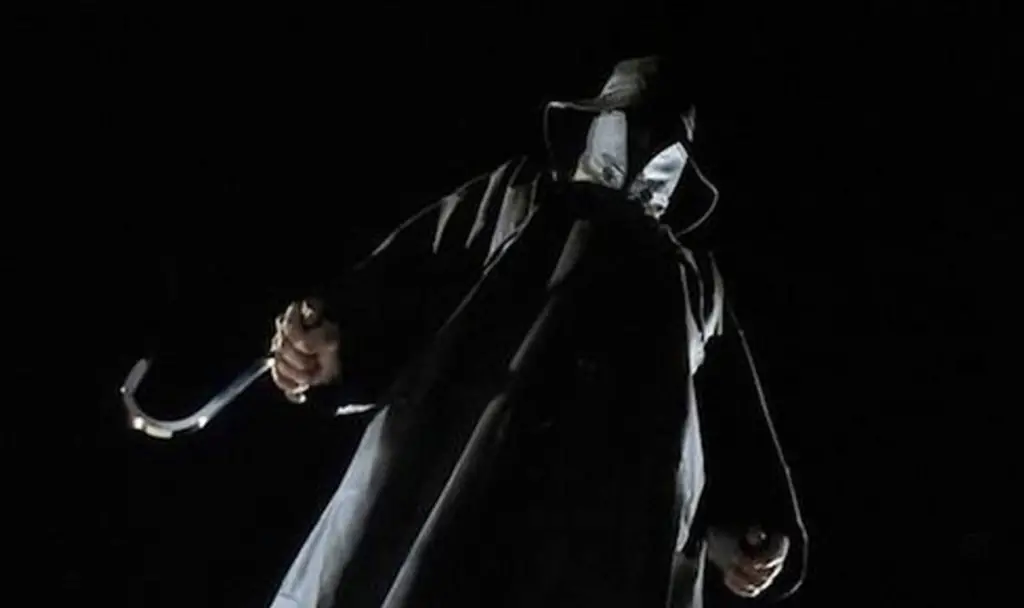
The Key Elements
The last words of the infamous godfather of horror, Edgar Allen Poe, were, “Lord, help my poor soul.” No director should feel that way going into a film project, especially a horror remake. So, defining which key elements to extract for a reimagined horror film is consideration number one. For example, imagine Freddy Krueger running amok in a dingy polo shirt and camp shorts, or a work shirt, dungarees, and rain boots. That costume, with a hooded raincoat and brandishing a terrifying meat hook, was reserved for The Fisherman in I Know What You Did Last Summer (1997). A Slasher horror film dying for a remake!
Krueger’s iconic wardrobe incorporated red and green stripes for a specific reason. After reading an article in Scientific American magazine, director Wes Craven learned the human eye’s perception of colors is “difficult to view simultaneously.” Therefore, “Freddy’s sweater was specifically designed to cause the viewer discomfort, appropriate for such a despicable character.”
So, in order to align with the horror remake code of conduct, Freddy Krueger doesn’t wield blowtorch boots in the remake of Nightmare on Elm Street (2010). His “Christmas-themed” sweater and razor-glove are the props of horror movie magic. Producer Michael Bay and director Samuel Bayer extracted the vital key elements of the iconic dream killer. The new Elm Street film lacked all the ingredients of good 80s horror: visionary directors, mind-bending CGI-less special effects, a one-of-a-kind soundtrack, groundbreaking script, and an untouchable decade of glorious horror franchises. But it provided enough of the horror-reimagined code of conduct and a dash of the key elements to keep fans from launching a Reddit campaign.
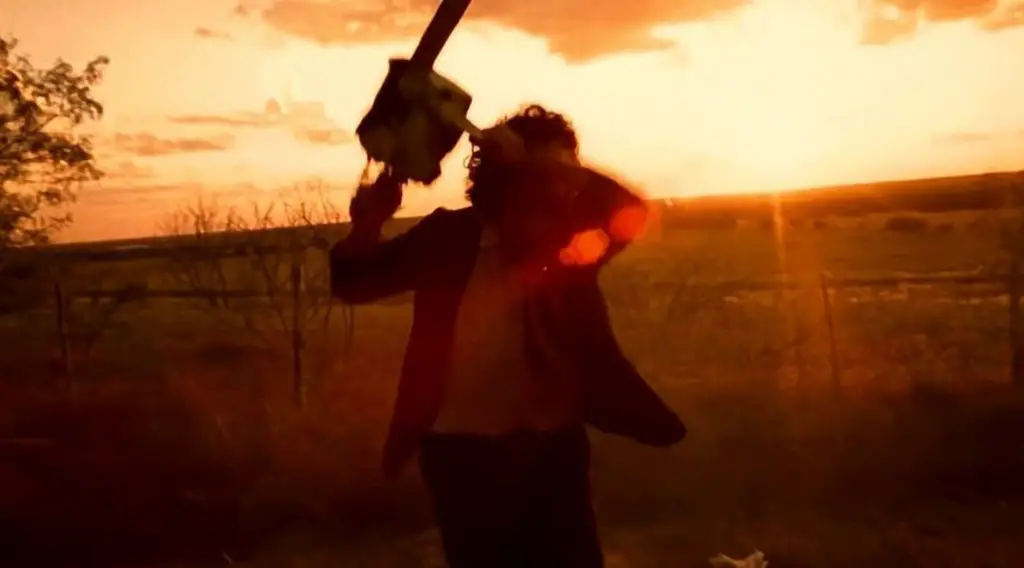
Two Hours You’ll Never Get Back
Three original horror films that delightfully disgusted and disturbed horror fans, individually created new tropes and storylines that dozens of directors would attempt to emulate. Three remakes that are nothing more than two hours you’ll never get back. Director Tobe Hooper, fresh off his intense The Texas Chainsaw Massacre (1974) and perfectly crafted The Fun House (1981), also opened the 80s with the near-perfect gem Poltergeist (1982). Other than stating the fact that The Texas Chainsaw Massacre (2003) was remade, the film was unappealing and would have fared better as a sequel.
The original Poltergeist incorporated an incredible collection of non-computerized supernatural and gory special effects and taught audiences two important lessons. Move the gravestones and the bodies, the unpredictable surprise revealed at the end of the film. Ignore the television if it starts talking at the beginning of the film. Here’s to suburban living! The stinker remake of Poltergeist (2015) was generally considered unnecessary. The film’s name drew the crowds, however, it was heavy on gratuitously lame jump scares, bad writing, and CGI effects. Unfortunately, the two key elements: a haunted television and the bodies and gravestones, mentioned, then sadly tossed in as an afterthought.
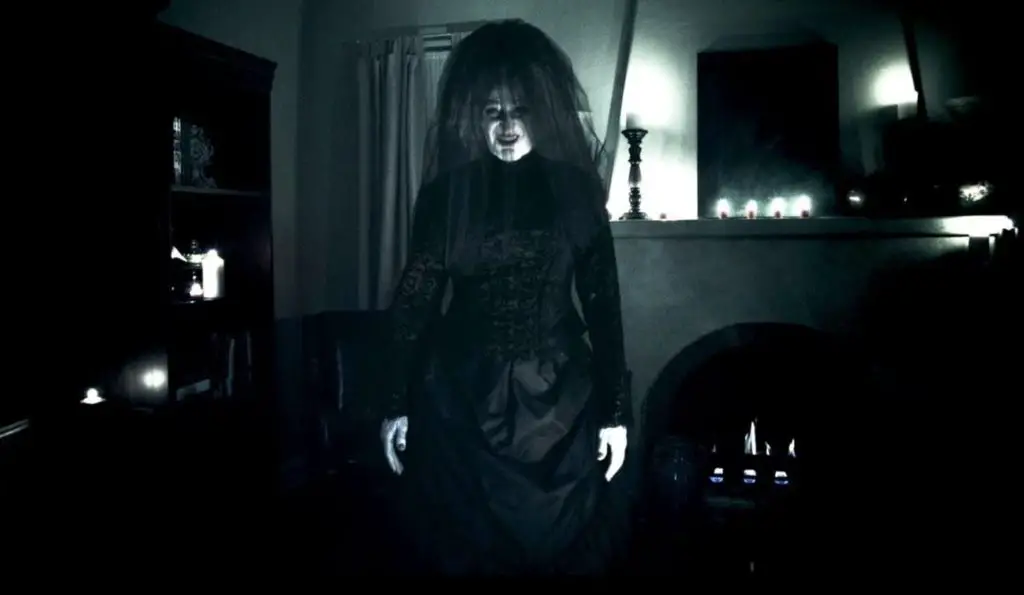
The Difficulty of Remaking Ultimate Suspense
In the original Poltergeist (1982), the youngest daughter Carole-Anne disappears after being sucked into the closet portal. She cries out in a muffled and terrified voice for her mother as if she is floating through the house in another dimension. It builds tension and the ultimate suspense. The reimagined version uses her shadow as a conduit to the spirit world. Knowing where Carole-Anne is in the house dampens the mystery. The number #1 rule of building suspense is taking time. Horror remakes rely too much on visually telling than actually telling the story. Good scripts mean a great story. No story, no suspense.
The Ring (2002) got Hollywood to consider how to be inspired by the 2002 Japanese scare-fest Ju-on: The Grudge. So, The Grudge (2004) was made and ushered in a brand new look for American-made horror-themed ghost stories. Paving the way for Insidious (2010) and The Conjuring trilogy. Wet wood doesn’t burn. The remake of The Grudge (2020) smolders along in misery. With plenty of genuine sparks of graphic violence and gore. However, it doesn’t live in the memory for long after the credits roll.
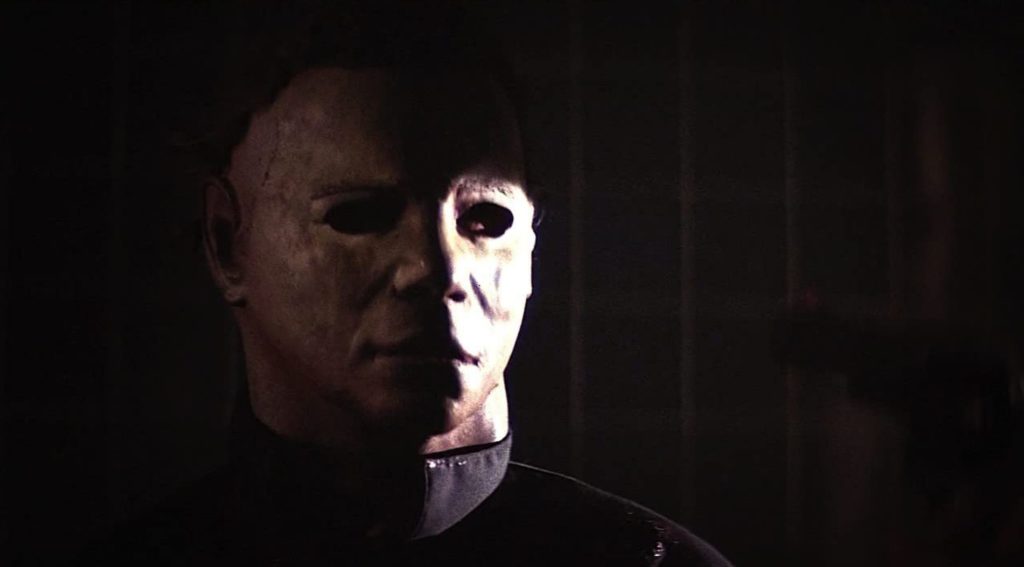
Never Remake the Horror Film for the Ages
Last but not least, there is the important key factor seen in the magnificent hall of fame smash slasher Halloween (1978) and its successor Halloween II (1981). The original films fused horror into the human conscience by allowing audiences to observe Micheal Myers’ first-person point of view as he stalked Haddonfield. Myers would also become the greatest slasher villain of all time. Halloween II picked up right where the first film left off and didn’t miss one terrifying beat. In a way, Carpenter was remaking his classic. But he twisted the script just enough, darkened the sets just enough, and made the new kills just right.
After Rob Zombie took a break from music, he would go on to direct the smart, but wildly popular and gross, House of 1000 Corpses (2003) and The Devil’s Rejects (2005). Naturally, reimagining a couple of director John Carpenter classics made perfect sense. Until it didn’t. Halloween (2007) and Halloween II (2009) were both sadistically evil with predictable jumpscares. Giving Michael Myers a backstory and a conscience made him the star of the film. Unlike the original which clearly made him the unanticipated and relentless boogeyman. Zombie’s films left nothing to the imagination, and weigh heavy on the side of depressing.
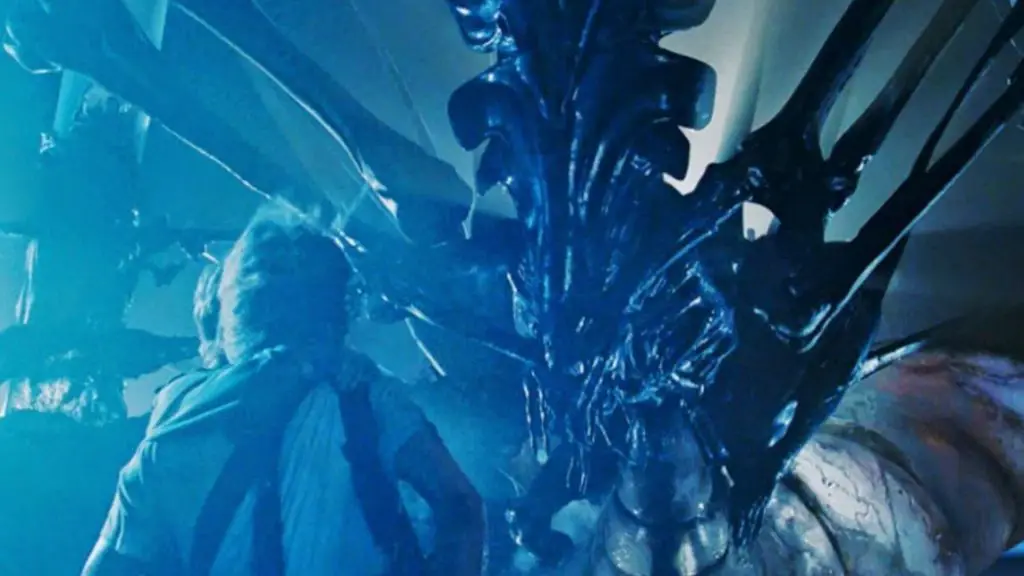
Remaking Horror – Consider the Fans, not the Profits
Imagine waking to an announcement of your favorite classic horror films reimagined. The chest-bursting scene in Alien (1979). Meeting the egg-laying queen mother and her face-hugging brood on LV-426 mining colony Hadley’s Hope in Aliens (1986). And the transformation scene in American Werewolf in London (1981). It was the first film to ever win an Academy Award for best makeup. And to this day, there has yet to be a scene in a horror film utilizing expertly crafted 100% CGI-free special effects.
Unless you account for the other great transformation scene in Fright Night (1985). After the great Peter Vincent helps Charlie Brewster save his girlfriend and prove that his next-door neighbor is a vampire, Charlie’s friend, Evil Ed turns werewolf. There is an amazing scene between Ed and Peter that easily matches the brilliant transformation in American Werewolf in London, only in reverse. It doesn’t quite have the details and perfect edits, but it comes pretty darn close.
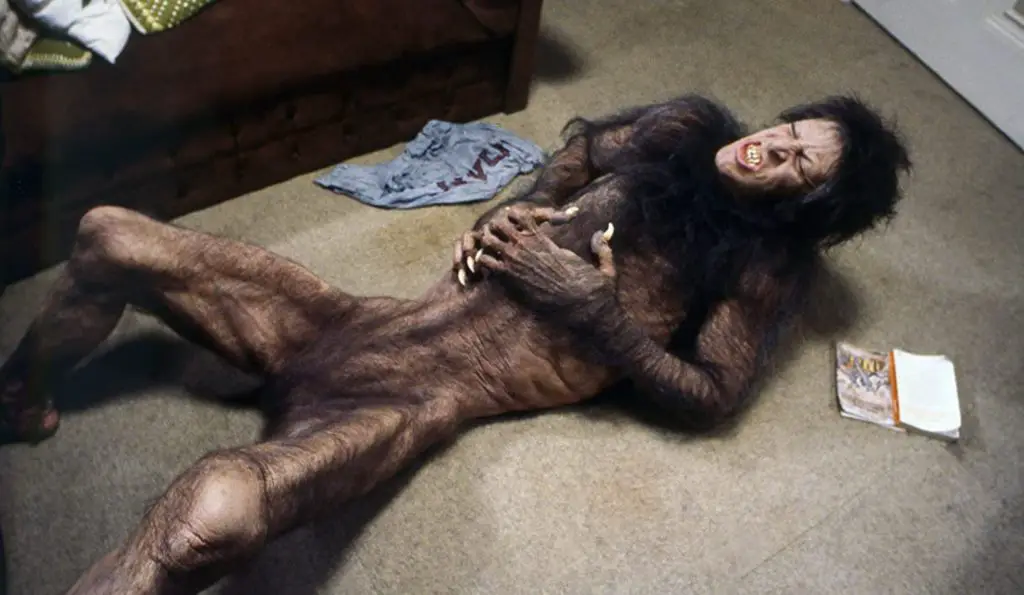
Is Any Horror Remake Fair Game? (no)
Writer Jason Zinoman from the Culturebox column on Slate.com writes, “Most die-hard horror fans will tell you that the remake is a corrosive virus that threatens to take over the entire industry. Critics are either dismissive or infuriated by it. Especially when they learn that “a sacred cow like Carrie is being remade.” The original 1976 version portrays Carrie as a broken and incredibly confused girl. Bridled to her insane mother’s religious lunacy, and completely out of touch with her ability to control her powers. Whereas the “new” Carrie in the 2013 remake is more restrained and thoughtful, almost empathetic at points, even towards the characters that turn against her. Until the prom that is.
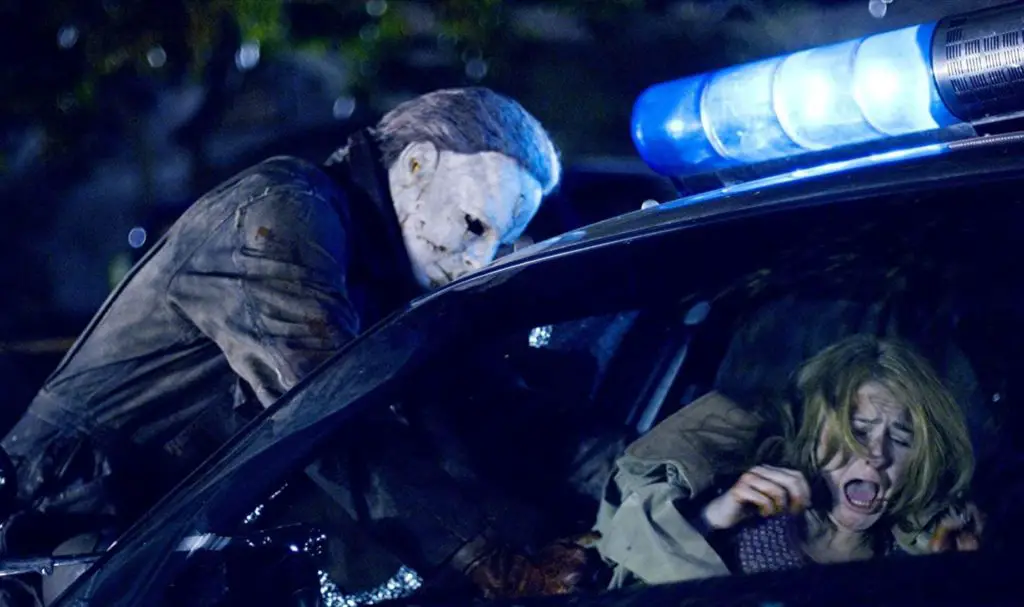
Was the Halloween remake Worth It?
Some horror films just don’t seem worthy of a remake. In the article Recycled Fear: The Contemporary Horror Remake as American Cinema Industry Standard, author James Francis Jr. writes, “Zombie’s Halloween offers genre commentary, its Carpenter’s ’78 version that not only helped initiate the slasher subgenre but gave rise to a substantial body of critical theory firsts.”
The remake was decades too late and is completely removed of “the original cultural or social messages of fear” that Carpenter’s two films brilliantly portrayed. Take for example Michaels’s escape from the asylum. In the original, we don’t get a real backstory. We see patients aimlessly walking the grounds in the rain, triggering Dr. Loomis of the impending doom to come. In the remake, we get inside the building and a third-person point of view of Myer’s life as he annihilates every guard from his cell to the exit door. In the original Halloween, Lynda and Bob die in an almost comically innocent way, whereas in the remake, it’s similar but much more gratuitous.
Any remake of any film genre is fair game. Is it, though? Probably, if the writer or director are good at convincing whoever it takes to get the studio to listen. And it also depends on what seat that person sits in at Hollywood’s power table. However, ask the important questions. Was the original film a blockbuster? Was the film an original story with plenty of amazing special effects? Did the film create a legion of global die-hard fans, and spawn an eternally fierce franchise? So, if the director sticks to the horror remake code of conduct the remake had better not suck! For more horror remake facts and fun, check out part one of the series, Horror Remakes, Magnificent or Shameful?